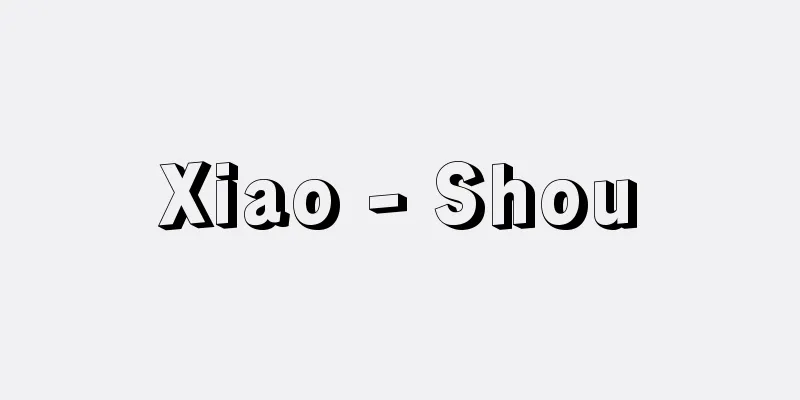Mortar - Crow

|
A threshing tool from the Edo period, also called "tousu." In a mortar-type suribushi mortar, several people turn a wooden stick attached to the upper mortar to remove the husks and turn the rice into brown rice. It was introduced from China in the early Kanei period (first half of the 16th century), and was more efficient than the traditional wooden mortars, becoming widespread around the Kyoho period (1716-1736). There are also mortars that are similar to pounding mortars, in which the mortar part is placed on the ground and the pestle part is stepped on with the foot to thresh rice. Source: Obunsha Japanese History Dictionary, Third Edition About Obunsha Japanese History Dictionary, Third Edition |
|
江戸時代の脱穀具 「とううす」とも読む。すり臼系統の唐臼は,上臼に取り付けた遣木 (やりき) を数人で回し,籾 (もみ) がらをのぞいて玄米にする。寛永初年(16世紀前半)に中国からもたらされ,従来の木の臼より能率がよく,享保(1716〜36)ごろから普及。つき臼系統の唐臼もあり,これは臼の部分を地面にすえ,杵にあたる部分を足で踏み,脱穀する。 出典 旺文社日本史事典 三訂版旺文社日本史事典 三訂版について 情報 |
<<: Karausu (standing) - Karausu
Recommend
Tsuguharu Foujita
Born: November 27, 1886 in Tokyo, Japan [Died] Jan...
Banner
A decoration that shows the might of Buddhas and ...
Vengeful spirits - Onryomono
In this sense, the demons that Zeami also pointed...
Kokiden - Kokiden
[1] One of the palace buildings in the Imperial Pa...
Beschi, CG (English spelling) BeschiCG
…In South India, they appealed to the rulers of t...
Evoked potentials
Evoked potentials are transient potential fluctuat...
Labor supply business - labor supply business
The business of having workers that one manages an...
Khā'ir Bay (English spelling)
… In 1517, Selim I of the Ottoman Empire entered ...
Mr. Watarai - Wataraiuji
This clan has served as the Negi family of the Ge...
Shrew - Shrew
A general term for mammals belonging to the Sorici...
Cathode fall section - cathode fall section
...This discharge has the structure shown in the ...
Tatsuta Shrine
Located in Misato-cho, Nara Prefecture. Formerly a...
Accounting inspector - Kanjoginmiyaku
One of the positions in the Edo Shogunate. Inspec...
Spherical aberration
A type of aberration that occurs when an optical ...
Owake Sukehachi - Owake Sukehachi
?-1653 A merchant in the early Edo period. He was...









